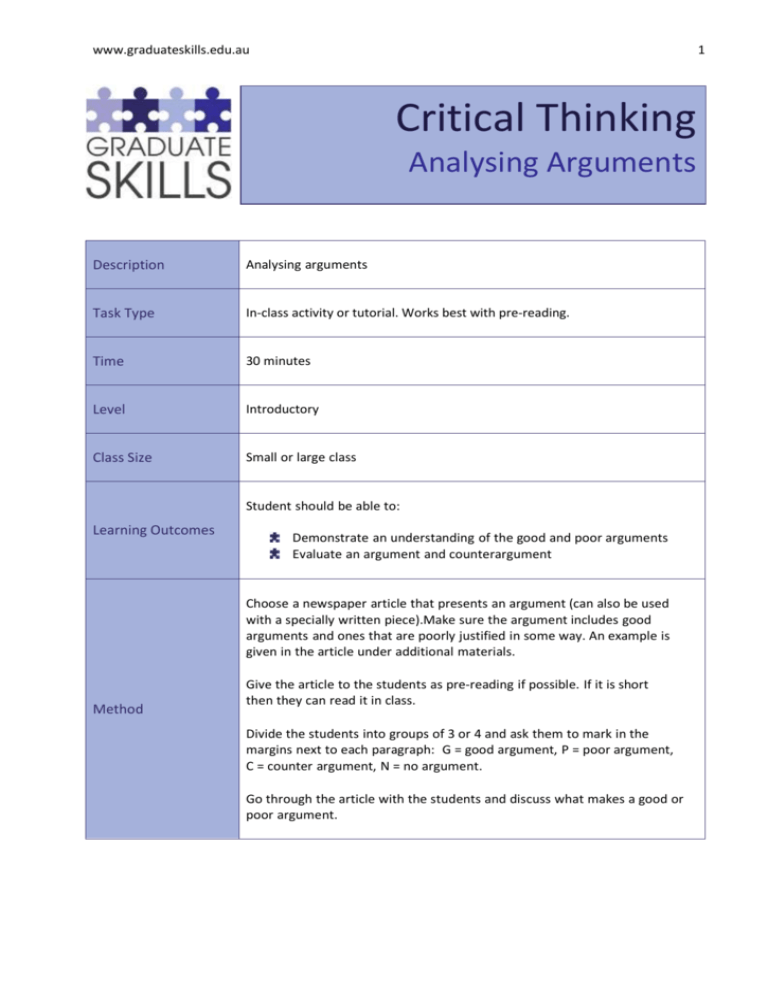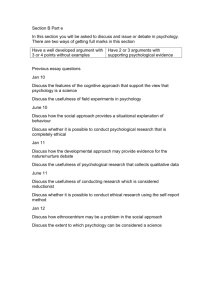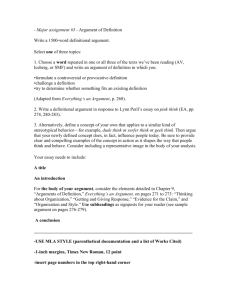www.graduateskills.edu.au Critical Thinking Analysing Arguments
advertisement

www.graduateskills.edu.au 1 Critical Thinking Analysing Arguments Description Analysing arguments Task Type In-class activity or tutorial. Works best with pre-reading. Time 30 minutes Level Introductory Class Size Small or large class Student should be able to: Learning Outcomes Demonstrate an understanding of the good and poor arguments Evaluate an argument and counterargument Choose a newspaper article that presents an argument (can also be used with a specially written piece).Make sure the argument includes good arguments and ones that are poorly justified in some way. An example is given in the article under additional materials. Method Give the article to the students as pre-reading if possible. If it is short then they can read it in class. Divide the students into groups of 3 or 4 and ask them to mark in the margins next to each paragraph: G = good argument, P = poor argument, C = counter argument, N = no argument. Go through the article with the students and discuss what makes a good or poor argument. www.graduateskills.edu.au 2 Link this back to writing an argumentative essay. Issues to address might be: Concluding Activity Ensuring good quality of supporting evidence Who is your audience? Presenting argument logically and clearly Avoid emotional language Consider apposing arguments Referencing and plagiarism Choice of the article is very important. It may be appropriate to write your own to demonstrate this effectively. Tips Theoretical underpinnings should include theory on writing an argument and on flawed arguments. The concluding activity is very important to make the link between this and writing an essay for university. Read the article. What is the point that the author is trying to make? For each paragraph decide whether the paragraph decide whether it is a good argument, poor argument, counter argument or no argument. Student Instructions Put a letter in the margin as follows: G = good argument, P = poor argument, C = counter argument, N = no argument. Sample articles: Gross, D. (2008). Subprime Suspects: The right blames the credit crisis on poor minority homeowners. This is not merely offensive, but entirely wrong. [Link] Additional Material Additional materials on writing of arguments can be found at: Chubb, J. (no date). Critical Thinking for business and human resource development. [Link] Empire State College (no date). Using evidence to prove your point in Business Writing. [Link] Support for this resource has been provided by the Australian Learning and Teaching Council Ltd, an initiative of the Australian Government Department of Education, Employment and Workplace Relations. The views expressed in this (report/publication/activity) do not necessarily reflect the views of the Australian Learning and Teaching Council.







